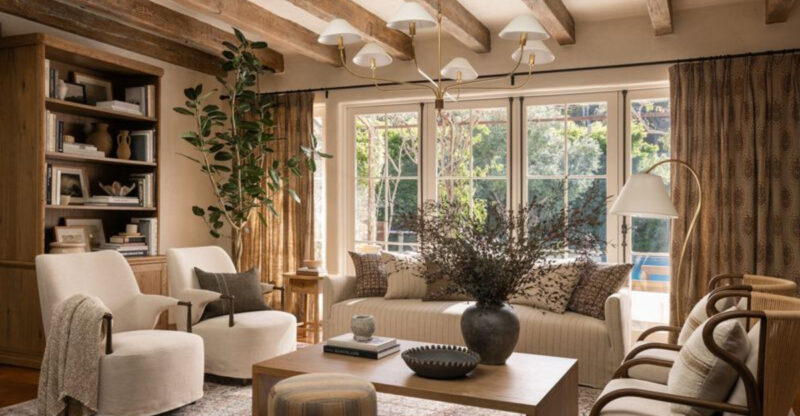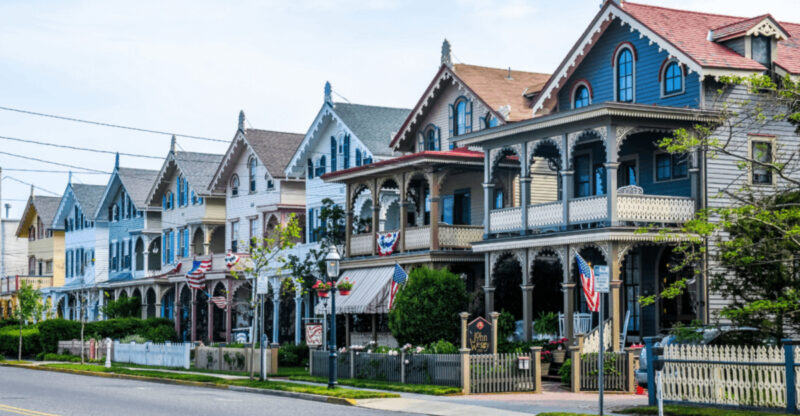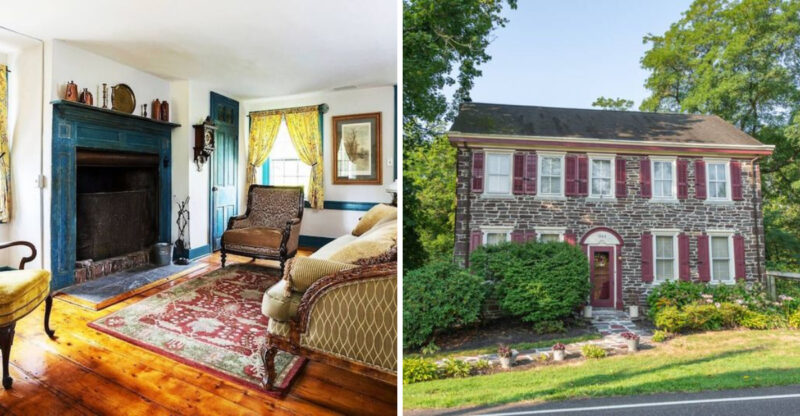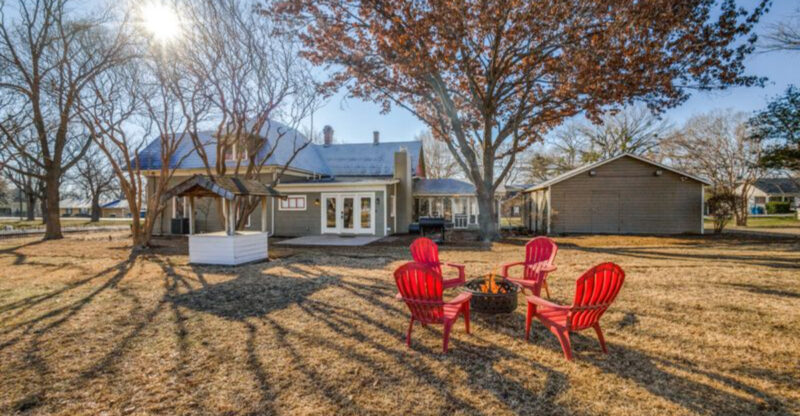15 Grand Homes Behind America’s Greatest Minds
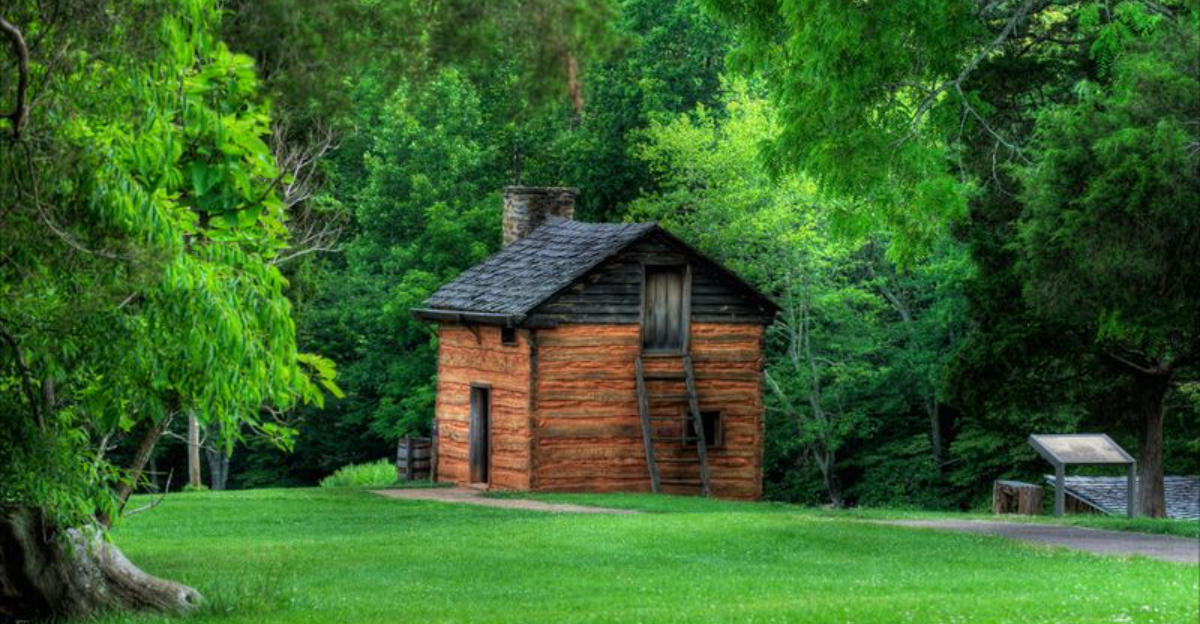
Throughout American history, brilliant minds have found inspiration within the walls of remarkable homes. These grand residences weren’t just places to eat and sleep – they were creative sanctuaries where ideas flourished and masterpieces were born.
The walls held more than furnishings; they held ambition, introspection, and the rhythms of creative life.
Step into the spaces that shaped some of America’s most enduring minds – and discover how architecture, solitude, and personal vision turned houses into powerful instruments of expression.
1. The Mark Twain House – Hartford, Connecticut
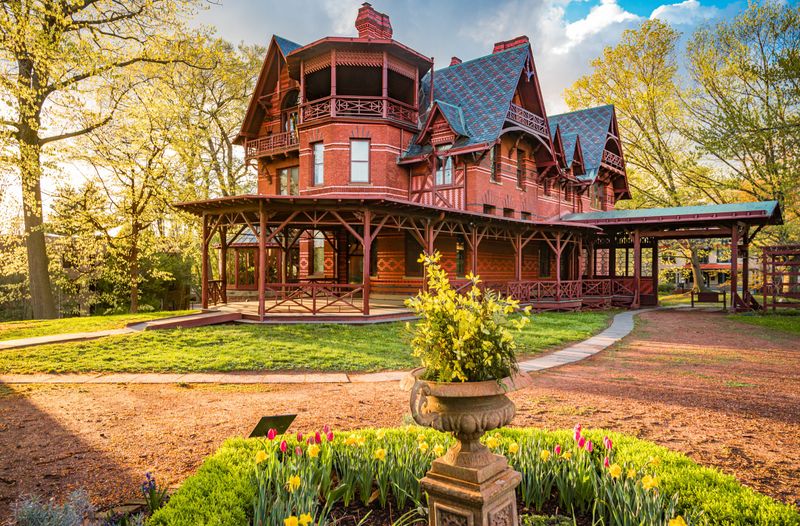
Samuel Clemens crafted his most famous works in this Victorian Gothic mansion with its distinctive brick exterior and ornate interiors.
Built in 1874, the home features 19 rooms filled with quirky innovations that reflected the author’s forward-thinking personality. The billiards room on the top floor became his sanctuary for writing classics like “The Adventures of Huckleberry Finn.”
2. The Mount – Lenox, Massachusetts

Novelist Edith Wharton designed this elegant country estate herself, applying principles from her book “The Decoration of Houses.”
Completed in 1902, the classical revival mansion sits amid formal gardens that showcase Wharton’s passion for landscape design. From her bedroom, she wrote mornings in bed, dropping completed pages for her secretary to collect from the floor.
3. Ernest Hemingway House – Key West, Florida
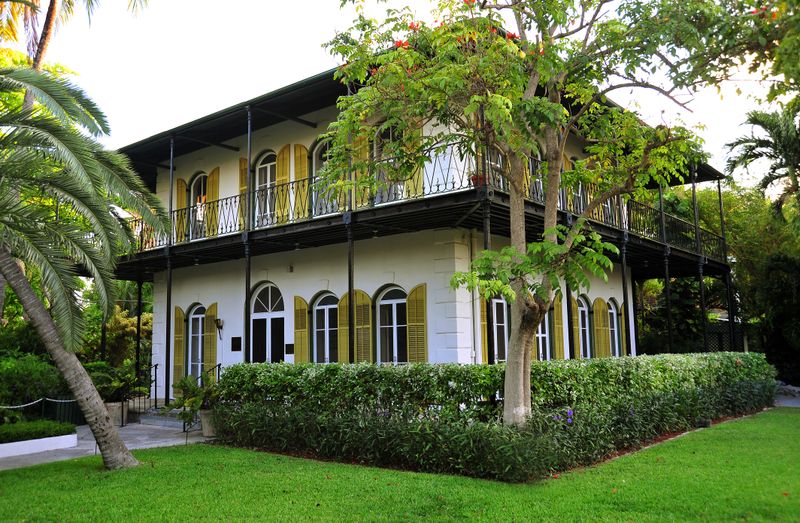
Tropical breezes and six-toed cats populate this Spanish Colonial residence where the Nobel Prize-winning author lived during the 1930s.
The limestone structure features wraparound balconies and lush gardens. Hemingway wrote portions of “A Farewell to Arms” and “For Whom the Bell Tolls” in his second-floor writing studio, connected to the main house by a walkway.
4. Orchard House – Concord, Massachusetts
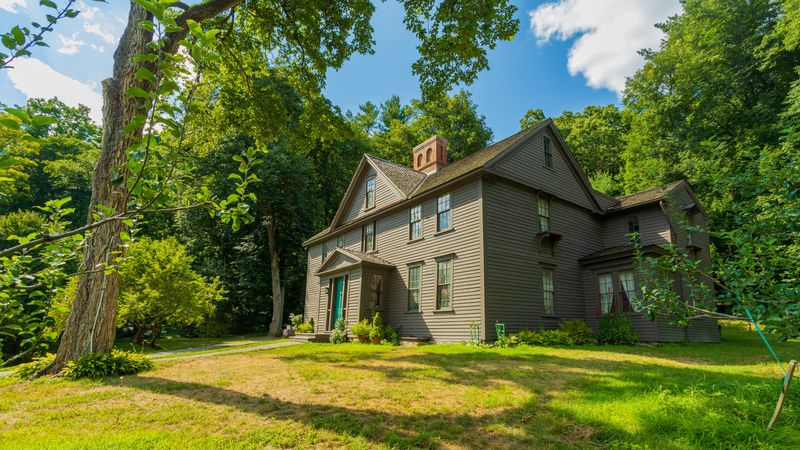
Rustic charm permeates this brown clapboard farmhouse where Louisa May Alcott penned her timeless novel “Little Women.”
Dating to the 1700s, the modest home still contains original furnishings and Alcott family possessions. Her father built a small desk between two windows in her bedroom where she wrote at night by candlelight, basing her characters on her own family.
5. Rowan Oak – Oxford, Mississippi

Southern literary genius flourished within this Greek Revival mansion surrounded by ancient cedars and magnolias.
William Faulkner purchased the dilapidated property in 1930 and meticulously restored it over decades. Visitors can still see his daily work routine outlined in pencil on the office wall and the outline for “A Fable” written directly onto the plaster.
6. Georgia O’Keeffe Home And Studio – Abiquiú, New Mexico

Desert minimalism defines this adobe compound where sweeping vistas inspired iconic American paintings. O’Keeffe renovated the crumbling 18th-century structure herself, creating sparse white-walled rooms with picture windows framing the dramatic landscape.
Her beloved “Black Door” appears in multiple paintings, while her kitchen reflects her ahead-of-time appreciation for simple, organic living.
7. Olana – Hudson, New York
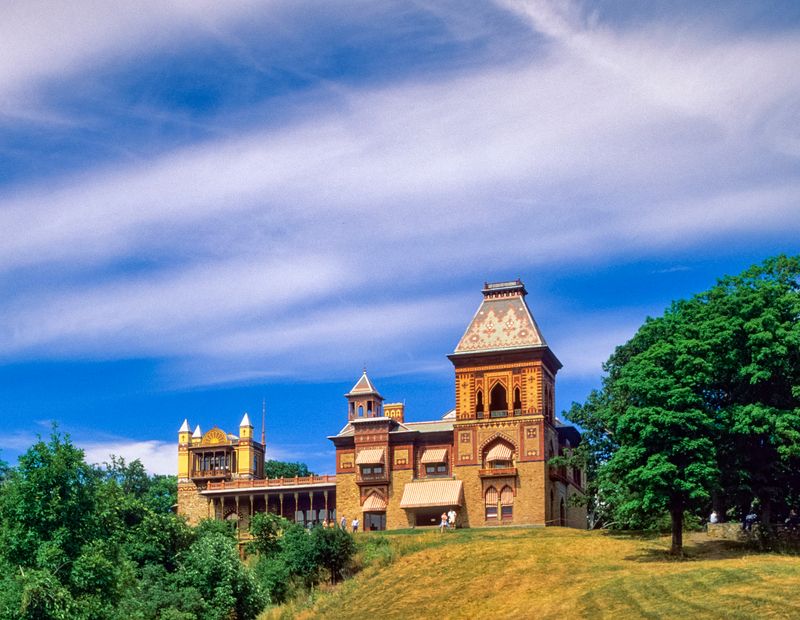
Fantasy meets function in this Persian-inspired hilltop villa created by landscape painter Frederic Church. Built between 1870-1872, the eclectic mansion combines Victorian structural elements with Middle Eastern decorative motifs.
Strategically positioned windows frame stunning Hudson River Valley views like living paintings, embodying Church’s belief that architecture should harmonize with natural surroundings.
8. Pollock-Krasner House And Study Center – East Hampton, New York
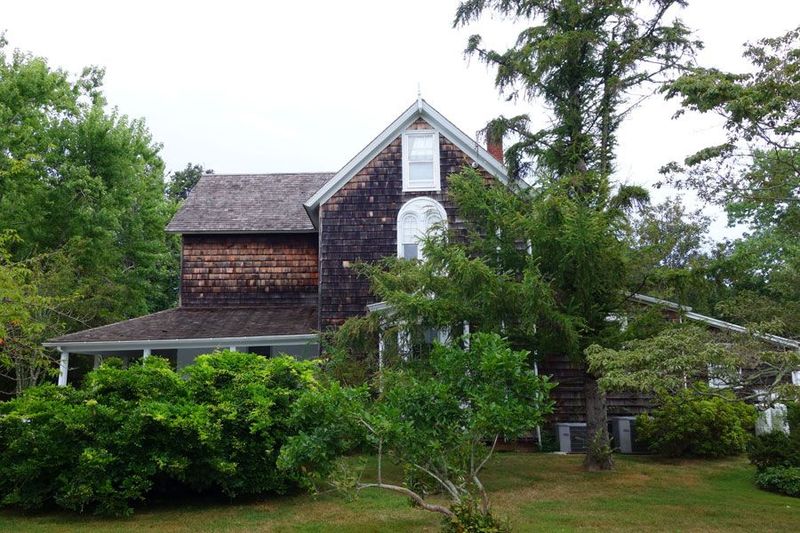
Revolutionary art emerged from this unassuming farmhouse where abstract expressionism found its footing. Jackson Pollock and Lee Krasner converted the barn into a studio where Pollock created his famous “drip paintings” directly on the floor.
Paint splatters still mark the wooden floorboards, preserving the physical evidence of Pollock’s revolutionary technique and artistic energy.
9. Thomas Hart Benton Home & Studio – Kansas City, Missouri

Midwestern pragmatism characterizes this modest limestone house where American Regionalist paintings captured everyday life.
Benton’s carriage house studio remains exactly as he left it, with paintbrushes, pigments, and unfinished canvases awaiting his return. His handmade furniture throughout the property reveals his lesser-known woodworking talents, while the curved walls he designed showcase his muralist’s eye for space.
10. Wyeth Studio At Brandywine River Museum – Chadds Ford, Pennsylvania
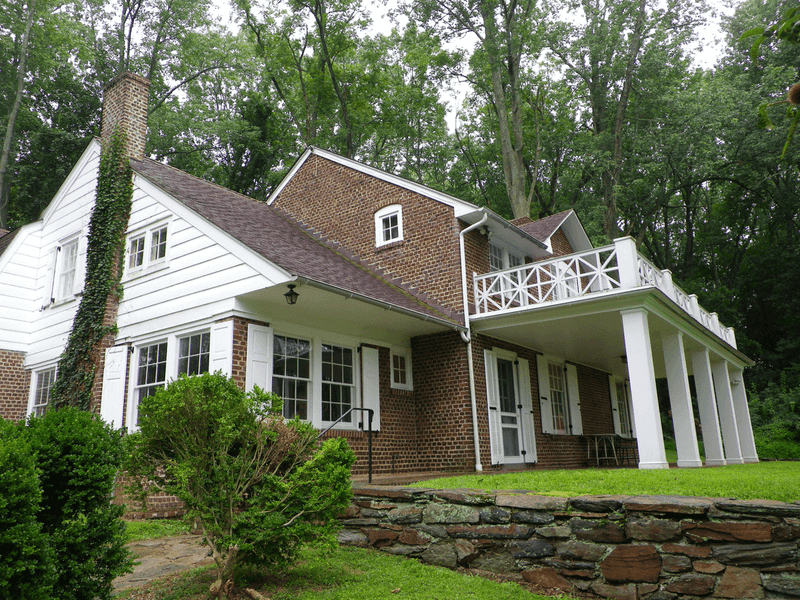
Rural American realism found expression in this converted schoolhouse studio nestled in Pennsylvania’s picturesque Brandywine Valley. Three generations of Wyeth painters – N.C., Andrew, and Jamie – created their distinctive works here.
Andrew’s studio remains meticulously preserved with his painting materials, reference books, and collected objects that inspired his hauntingly beautiful tempera paintings of the surrounding countryside.
11. Taliesin – Spring Green, Wisconsin
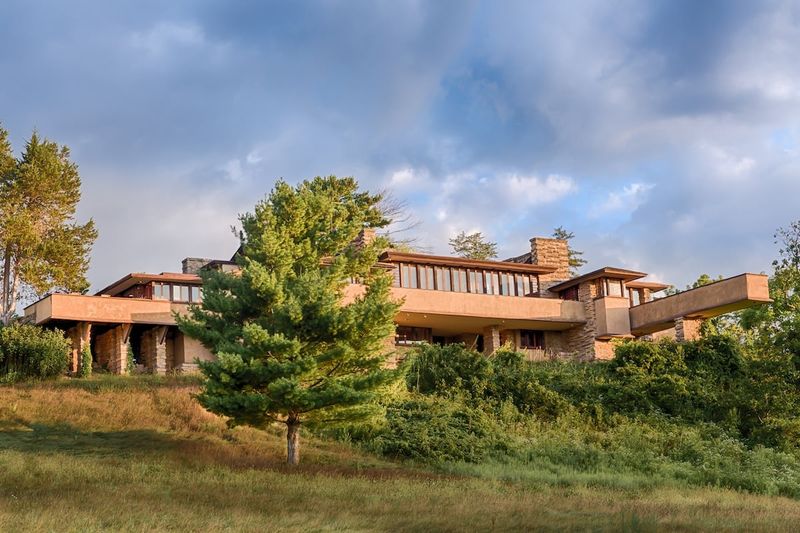
Architectural innovation permeates every corner of Frank Lloyd Wright’s personal laboratory for organic design principles. Begun in 1911 and continuously modified until Wright’s death in 1959, the sprawling estate embodies his philosophy of harmony between human habitation and natural environment.
Wright’s studio, with its dramatic cantilevers and clerestory windows, demonstrates his revolutionary approach to integrating buildings with landscapes.
12. Monticello – Charlottesville, Virginia
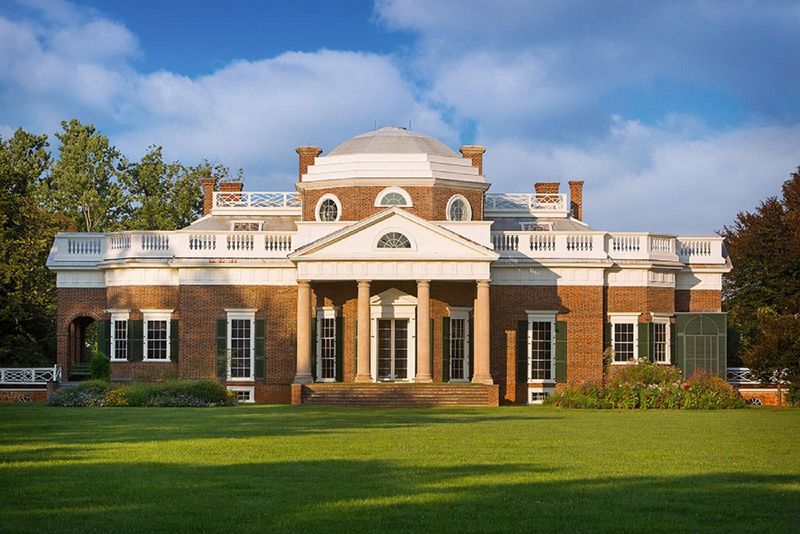
Enlightenment ideals materialize in this neoclassical masterpiece atop a Virginia mountain, reflecting Thomas Jefferson’s brilliant, complicated legacy. Designed and repeatedly modified by Jefferson himself, the home showcases his fascination with innovation through dumbwaiters, skylights, and clever storage solutions.
His library once held 6,500 volumes, while his cabinet of curiosities displayed Native American artifacts alongside European scientific instruments.
13. Cedar Hill – Washington, D.C.
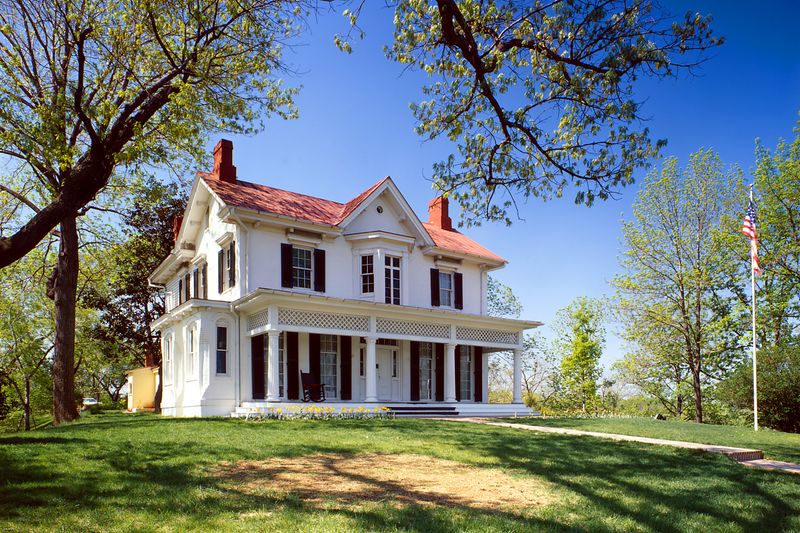
Freedom’s meaning takes physical form in this Victorian mansion that abolitionist Frederick Douglass purchased after escaping slavery.
Situated on a hill overlooking the nation’s capital, the 21-room home contains thousands of Douglass’s personal items. His library holds over 1,000 volumes, while his study displays the walking stick given to him by Mary Todd Lincoln after President Lincoln’s assassination.
14. Booker T. Washington National Monument – Hardy, Virginia
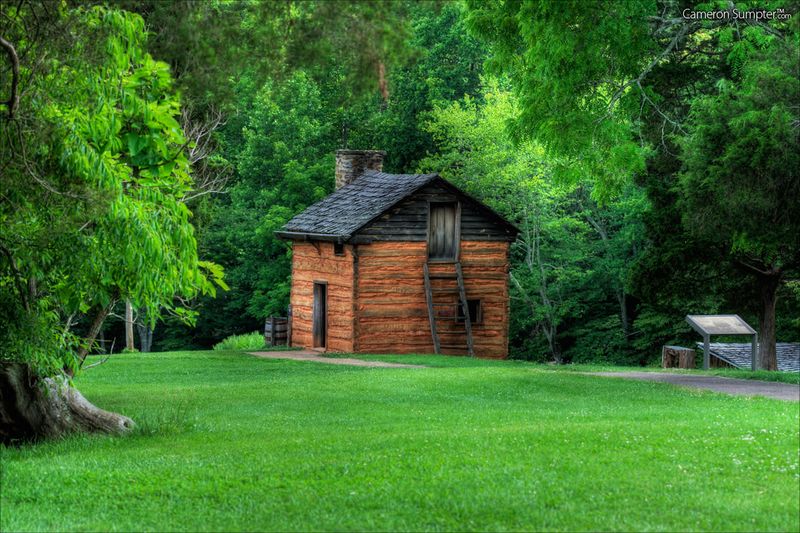
Educational legacy began in humble circumstances at this reconstructed tobacco farm where Washington was born into slavery in 1856.
The 207-acre property includes the foundation of the original kitchen cabin where Washington lived as a child. Simple log structures and working farm areas illustrate the harsh conditions he overcame before founding Tuskegee Institute and becoming a prominent educator and advisor.
15. Albert Einstein House – Princeton, New Jersey
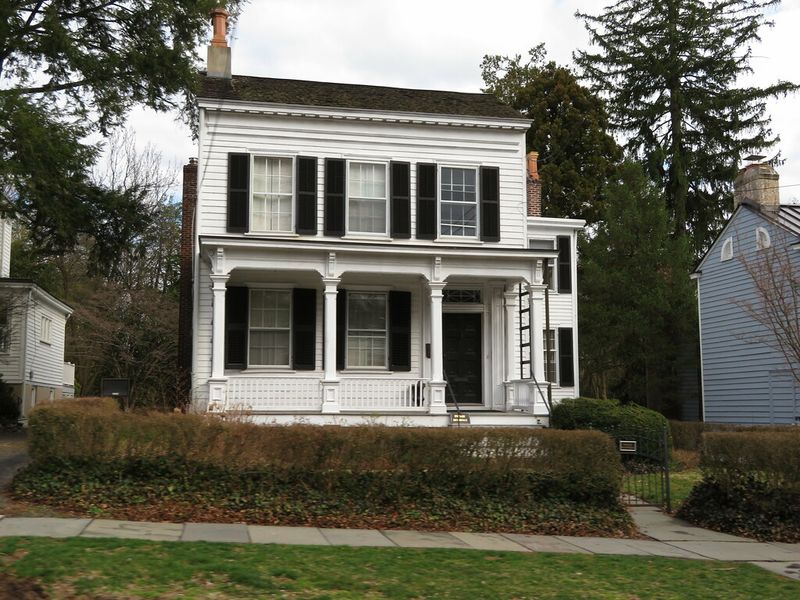
Modest genius thrived in this unassuming white clapboard house where relativity’s architect spent his final two decades.
Einstein purchased the Mercer Street home in 1935 after fleeing Nazi Germany to join Princeton’s Institute for Advanced Study. Though privately owned and not open to the public, the simple structure represents Einstein’s preference for intellectual pursuits over material displays of wealth or status.

